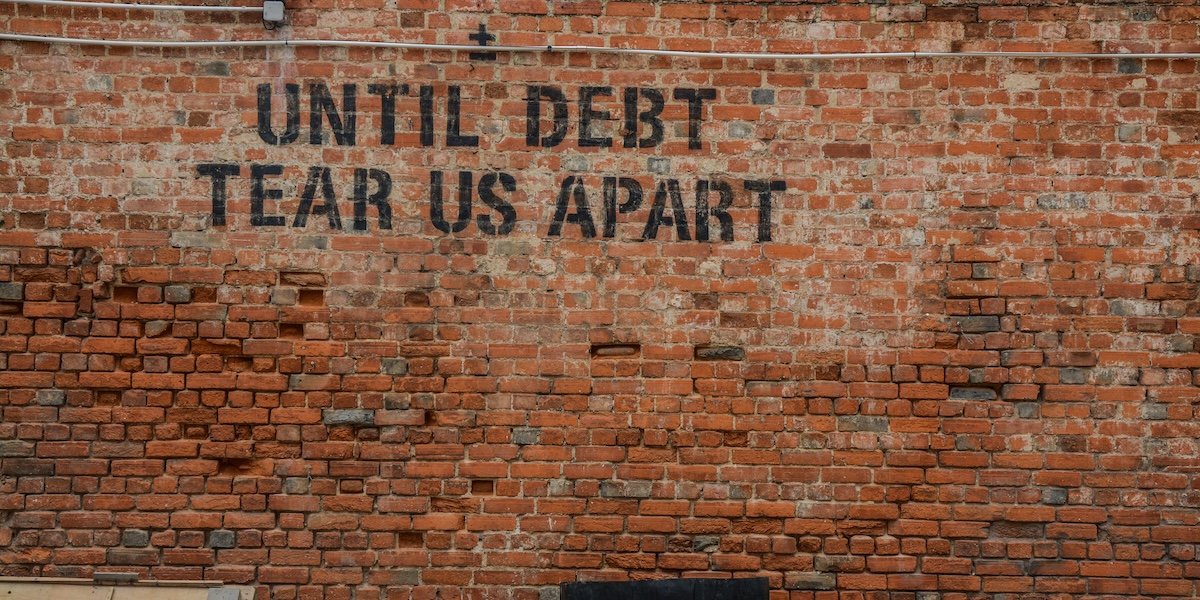
Change Debt: Why Organizations Struggle with Change (And How to Fix It)
Change debt is the accumulated loss of trust and alignment that makes every subsequent change harder.
Every organization knows the feeling: a new initiative launches with fanfare, promises are made, teams mobilize—and then, somewhere along the way, momentum stalls. The change doesn't quite land. People go through the motions but their hearts aren't in it. And when the next change comes along, it's somehow even harder to get people on board.
What's happening isn't just change fatigue. It's something more insidious: change debt.
What Is Change Debt?
If you're familiar with technical debt in software development, change debt works the same way. Technical debt accumulates when developers take shortcuts that work now but create problems later. The code still runs, but it becomes increasingly brittle and harder to modify.
Change debt is the organizational equivalent. It accumulates when a transformation is announced but never fully explained, when leaders move on to the next priority before the current one is complete, when feedback is solicited but ignored, or when promises about support or outcomes aren't kept.
Each of these moments creates a small withdrawal from your organization's trust account. And like financial debt, change debt compounds. The interest comes due in cynicism, disengagement, and resistance.
The Symptoms
Change debt doesn't announce itself. Instead, you notice the symptoms: initiatives take longer than they should. People wait to see if this change is "real" before committing. The same objections surface repeatedly—"We tried this before and it didn't work." Your best people check out, protecting themselves after investing in too many abandoned changes.
How Change Debt Accumulates
The Initiative Graveyard. Every unfinished initiative adds to the debt. That digital transformation that was 80% complete before priorities shifted? That restructuring that never addressed underlying problems? They become cautionary tales that employees reference when the next big change is announced.
The Consultation Theater. Nothing builds change debt faster than fake participation. When organizations ask for input they never intended to use, they teach employees that their voices don't matter.
The Communication Vacuum. Change without context is just disruption. When people don't understand why a change is happening or what it means for them, they fill the void with speculation. That speculation almost always skews negative.
The Leadership Turnover Cycle. New leaders often launch new initiatives without acknowledging or completing the changes their predecessors started, adding to the pile of half-finished transformations.
The Solution Is Simpler Than You Think
Here's the good news: dealing with change debt is easier than most organizations realize. The primary issue isn't that changes are wrong or that people resist them—it's that changes aren't documented well enough.
Think about it. When changes aren't properly documented:
- People don't know what's actually changing or why
- There's no clear owner or timeline
- Progress is invisible
- Completion is ambiguous
- Lessons aren't captured for next time
The solution? Document your changes as deliberately as you document your code, your finances, or your strategy.
Start With Documenting Change
Every significant change should have a clear, accessible record that answers: What are we changing? Why are we changing it? Who owns it? What's the timeline? What does success look like? How will we know when we're done?
This isn't bureaucracy—it's clarity. When changes are documented, several things happen immediately:
Trust begins to rebuild. Documentation signals that this change is serious, thought-through, and accountable. It shows respect for people's time and attention.
Alignment becomes visible. Everyone can see the same information. Questions get answered before they become rumors. The "why" is always accessible.
Progress becomes trackable. You can't finish what you can't see. Documentation makes it clear whether a change is 20% done or 80% done—and whether it's stalled.
Completion becomes definitive. With documented success criteria, you know when you're done. No more initiative zombies that are neither alive nor dead.
Learning becomes possible. Documented changes create an organizational memory. You can look back and see what worked, what didn't, and why—making every subsequent change smarter.
This is exactly why we built Changebase. Organizations were struggling not because they were bad at change, but because change was invisible, scattered across emails and slides and people's heads. Changebase makes change visible, trackable, and completable.
The Other Essential Practices
Documentation is the foundation, but a few other practices matter:
Finish what you start. Before launching something new, ask what you can complete first. Sometimes the best new change is finishing an old one. Documented changes make it obvious which initiatives are languishing and need either completion or formal closure.
Communicate openly. Share progress transparently, including setbacks. Close the loop when you ask for input. The communication itself builds trust, even when people disagree with decisions.
Make fewer, better bets. Every change draws from the same limited pool of organizational energy. Better to document and complete three things well than launch ten things that peter out.
The Path Forward
Change debt is real, and it's likely affecting your organization more than you realize. But the solution isn't complex change management frameworks or expensive consultants. It starts with something remarkably simple: writing things down.
Document what you're changing and why. Track progress honestly. Declare completion clearly. Build an organizational memory of what you've learned. Do this consistently, and you'll find that change gets easier, not harder, over time.
Organizations that master change don't have secret formulas. They simply take change seriously enough to document it, track it, and complete it. They understand that every change is easier or harder based on how the last one went.
What's the state of change debt in your organization? More importantly, what's one change you could document today to start paying it down?
Changebase helps organizations document, track, and complete changes with clarity and alignment—so every change builds trust instead of eroding it.